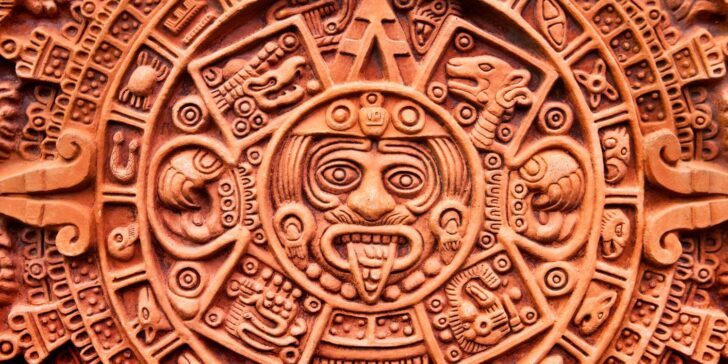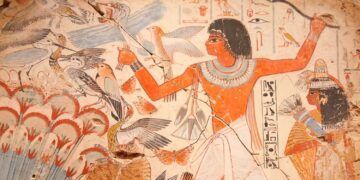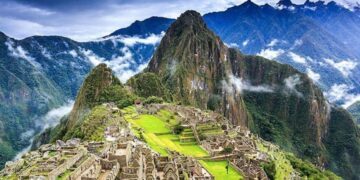The Aztec Empire was one of the world’s largest and strongest empires from the 14th to the 16th Century.
Like many other civilizations in the New World, it was decimated by the invading Spanish conquistadors and their armies.
It makes us wonder, though, what everyday life was like for the average person in the Aztec city-states.
Join us as we explore how the Aztecs became so powerful and learn about their rich cultural heritage. We’ll also take a look at the legacy this great civilization left behind.
The origin and expansion of the Aztec Empire.
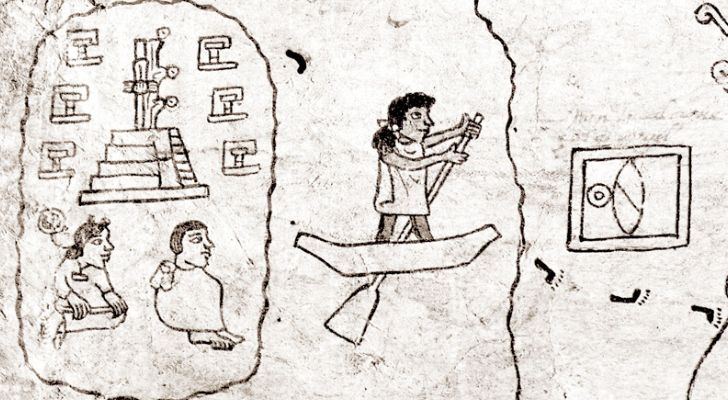
The exact history of the Aztecs isn’t entirely clear. However, we can trace their origins to the early 1300s when a small tribe of nomadic people arrived in modern-day central Mexico.
These travelers left their ancestral home toward the north, called Aztlan, hence the name Aztecs.
Finding a new home for the Aztecs wasn’t so straightforward. They would find a settlement, then get into a fight with the host community and get kicked out.
This pattern continued until the Aztecs finally found their forever home around the marshy valley near Lake Texcoco.
According to legend, one of their shamans then had a vision; they were to build their home in the place where they saw an eagle eating a snake while sitting on a cactus.
In 1325 A.D., the Aztecs witnessed this marvel on a small island on Lake Texcoco and settled for the last time. They called this place Tenochtitlán.
Although we call these people Aztecs, they didn’t use this name for themselves. Instead, they called themselves Tenochca or Mexica.
When the Aztecs arrived, about 50 communities already lived around Lake Texcoco. Azcapotzalco, the largest and most powerful city in the area, collected taxes from smaller tribes, including the Aztecs.
Finally, when Azcapotzalco’s leader died, there was a struggle over who would take the throne. Seizing this moment, the Aztecs joined forces with two other cities, Tlacopan and Texcoco.
This was known as the Triple Alliance, and together, they went to war against Azcapotzalco and won.
And so the reign of the mighty Aztec Empire began. Through wars and trade, they conquered neighboring regions and had up to 370 cities under their rule at the height of their reign.
Culture and daily life of the Aztecs.
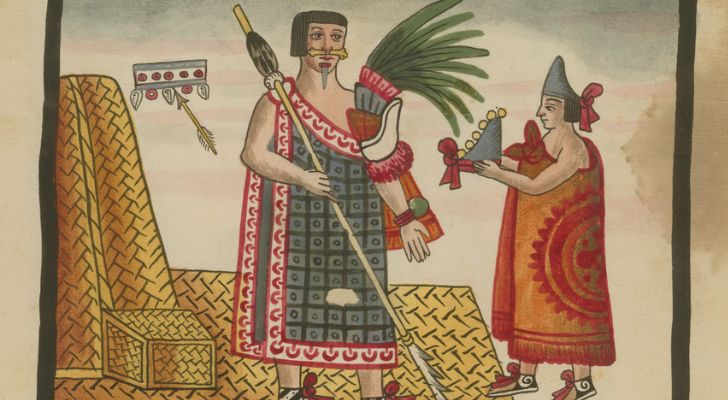
Traditional Aztec society was divided into three main classes: the nobles, commoners, and slaves.
The noble class, pipipltin, included the royal families, priests, and warriors. The royal class controlled the commoners’ daily lives and received tributes from them.
They also decided when and against whom they would go to war.
The priests dedicated their lives to the religion and didn’t get married. They were responsible for conducting rituals and hosting religious festivals.
As for the warriors, their life was dedicated to preparing for war. However, whenever the Aztecs faced a threat, the warriors weren’t left to fight alone.
All Aztec boys, even commoners, received battle training. This way, they could summon a formidable army to crush their enemies when necessary.
This was also one of the few ways for commoners or slaves to rise up into higher classes.
The commoners were called macehualtin, and most of them were farmers. Others were traders, artisans, and even low-ranking priests.
Surprisingly, life was comfortable for the Aztec commoners. Some, like the farmers, owned land, while traders could sell their wares to distant cities to make a profit.
The lowest class was the slaves, also called serfs. They had limited rights, but some could buy their freedom.
The children of Aztec slaves were not born into servitude, either, and would typically enter the commoner class.
Religion was a central part of the Aztec culture and lifestyle. They believed in several gods and used human sacrifice in worship and to intimidate their enemies.
Achievements of the Aztecs.
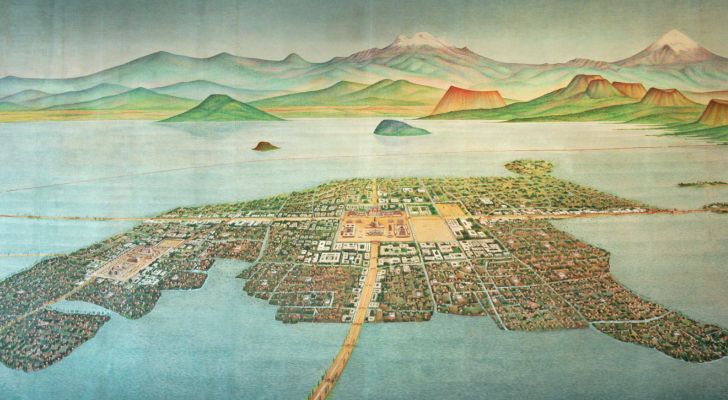
When the Aztecs first came to the Mexico Valley, they claimed a portion of land that no one else wanted. One of their most significant achievements was transforming that land into fertile ground for growing food.
The Aztecs grew enough to feed their population thanks to their special farming skills.
For instance, they built stationary floating islands called Chinampas to grow crops like corn, tomatoes, squash, peppers, and beans.
Aztecs were also masters of engineering. They constructed aqueducts to bring water to the lands for farming and household activities.
They also built massive pyramidal temples where they carried out their religious practices.
Education was important to the Aztecs, so all children, rich and poor, went to school. They valued the arts and expressed themselves through beautiful fabric designs, paintings, and poetry.
The Aztecs developed a unique base-20 number system and were extremely capable mathematicians. Additionally, they created a 260-day ritual calendar and a 365-day yearly calendar.
The end of the Aztec Empire and its legacy.
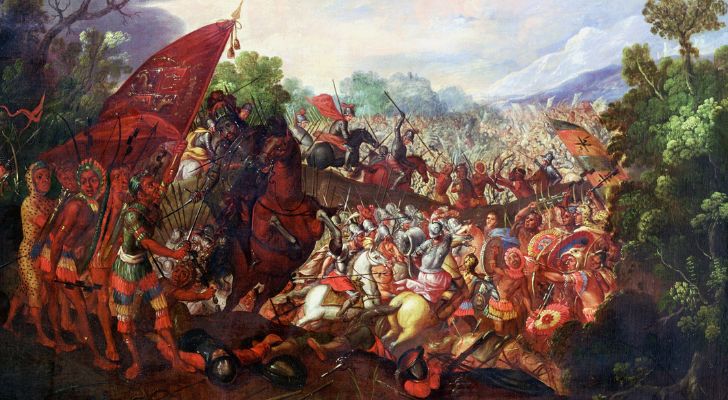
The Aztec Empire reigned for over 200 years. Tenochtitlan grew into one of the largest cities, with a population of about 250,000 people.
This was at a time when major European cities like Paris, France, and London, England, had barely 100,000 people.
In 1519, Hernán Cortés and about 300 soldiers from Spain invaded the Aztec Empire, but they were not alone.
You see, the neighboring cities didn’t really love the Aztec rulers. Therefore, when Cortés and his company arrived, convincing them to turn against the Aztecs wasn’t hard.
Eventually, the Spanish conquistadors and their allies brought the Aztec Empire to its knees.
The European invaders also brought deadly illnesses like smallpox and measles to the Aztec cities, which almost wiped out the population.
Despite losing the battle and, ultimately, their empire to the Spanish conquistadors, the Aztecs have not been forgotten.
About 1.5 million people in Mexico still speak the Aztec language, Nahuatl. And we’re reminded of their impressive skill just by looking at the beautiful structures left behind.
From a small group of nomads looking for a home, the Aztecs grew to become one of the most extraordinary powers in the Americas.
They rose to a position of leadership by uniting with some of their neighbors to form the Triple Alliance.
However, once established, they used their powerful military to control and intimidate other regional groups.
Eventually, after over 200 years of rule, the Aztec Empire fell. Nevertheless, we can see how brilliant they were just by looking at the impressive structures they built.

